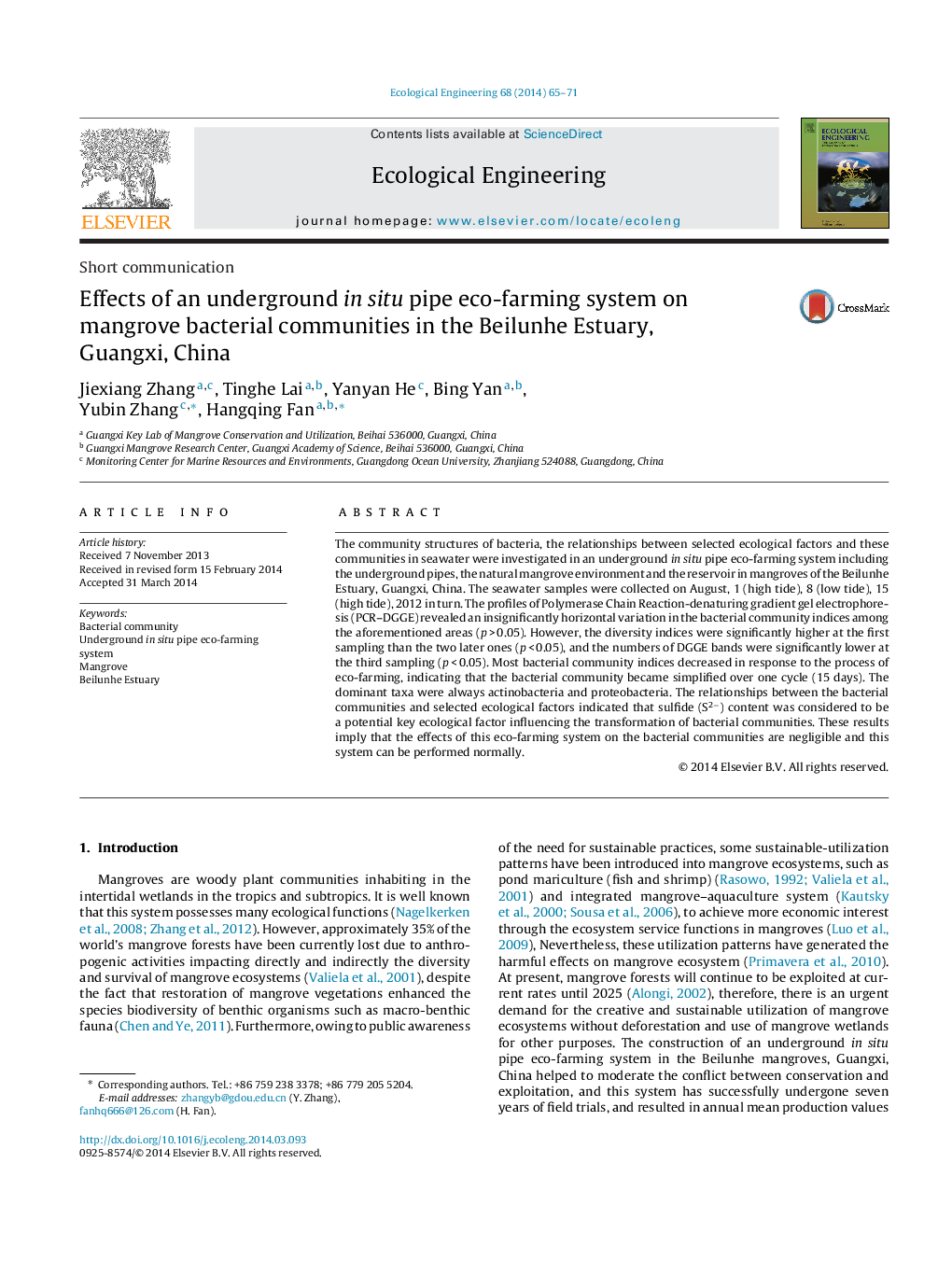| Article ID | Journal | Published Year | Pages | File Type |
|---|---|---|---|---|
| 6302280 | Ecological Engineering | 2014 | 7 Pages |
Abstract
The community structures of bacteria, the relationships between selected ecological factors and these communities in seawater were investigated in an underground in situ pipe eco-farming system including the underground pipes, the natural mangrove environment and the reservoir in mangroves of the Beilunhe Estuary, Guangxi, China. The seawater samples were collected on August, 1 (high tide), 8 (low tide), 15 (high tide), 2012 in turn. The profiles of Polymerase Chain Reaction-denaturing gradient gel electrophoresis (PCR-DGGE) revealed an insignificantly horizontal variation in the bacterial community indices among the aforementioned areas (p > 0.05). However, the diversity indices were significantly higher at the first sampling than the two later ones (p < 0.05), and the numbers of DGGE bands were significantly lower at the third sampling (p < 0.05). Most bacterial community indices decreased in response to the process of eco-farming, indicating that the bacterial community became simplified over one cycle (15 days). The dominant taxa were always actinobacteria and proteobacteria. The relationships between the bacterial communities and selected ecological factors indicated that sulfide (S2â) content was considered to be a potential key ecological factor influencing the transformation of bacterial communities. These results imply that the effects of this eco-farming system on the bacterial communities are negligible and this system can be performed normally.
Keywords
Related Topics
Life Sciences
Agricultural and Biological Sciences
Ecology, Evolution, Behavior and Systematics
Authors
Jiexiang Zhang, Tinghe Lai, Yanyan He, Bing Yan, Yubin Zhang, Hangqing Fan,
